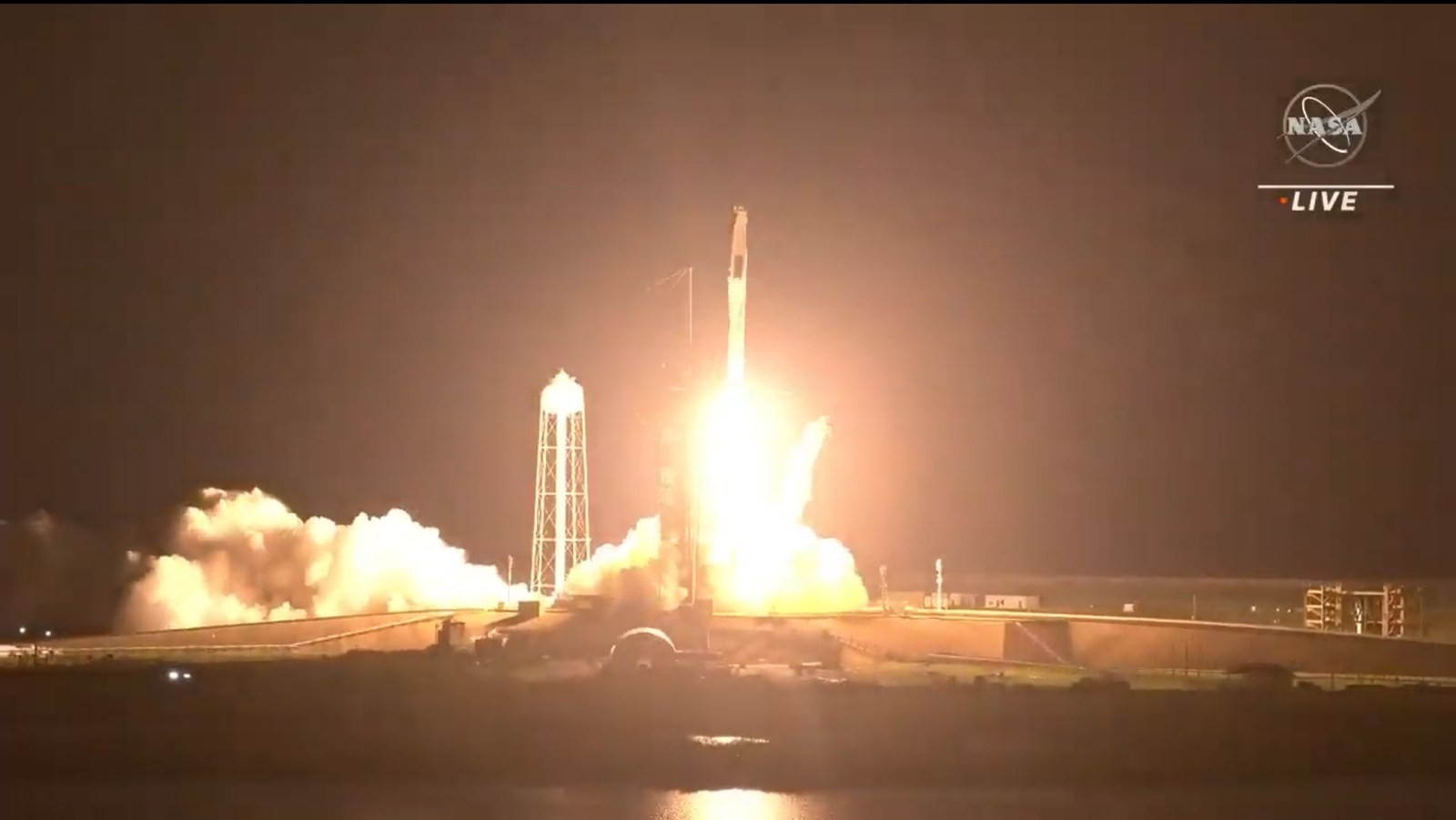European astronaut to travel to the ISS with SpaceX for the first time


- On 23 April 2021 at 11:49 Central European Summer Time, Thomas Pesquet (ESA), Shane Kimbrough and Megan McArthur (both NASA) and Akihiko Hoshide (JAXA) set off for the International Space Station (ISS). The Crew Dragon capsule with the four astronauts on board successfully docked with the ISS at 11:10 CEST on 24 April 2021.
- It is planned that Thomas Pesquet will live, work and conduct research on the ISS alongside German ESA astronaut Matthias Maurer for one week in late October 2021.
- The German Space Agency at DLR is currently preparing for Matthias Maurer's Cosmic Kiss mission together with ESA and is responsible for the selection and coordination of the German experiments on and contributions to the ISS.
- Focus: Astronautics, research in microgravity conditions, international cooperation
On 23 April 2021 at 11:49 Central European Summer Time, French ESA astronaut Thomas Pesquet set off for the International Space Station (ISS) on board the Crew Dragon spacecraft operated by US company SpaceX. He is the first European to fly into space in a capsule built by a private company. "We wish Thomas Pesquet all the best on his Alpha mission," says Walther Pelzer, Member of the DLR Executive Board and Head of the German Space Agency at DLR, which is responsible for the selection and coordination of Germany's experiments on and contributions to the ISS. "We are delighted that he will be working alongside German ESA astronaut Matthias Maurer on board the International Space Station for a few days in October, before handing over the baton to Matthias. It's great to see strong Franco-German cooperation in space, and this pairing will be a symbolic example of the friendship between the two countries."
Materials scientist Matthias Maurer, originally from the Saarland region, will travel to the ISS in autumn 2021. He will live and work in microgravity conditions on board the ISS for about six months during his first mission, called Cosmic Kiss. He will be replaced in turn by Italian ESA astronaut Samantha Cristoforetti. For the first time, three European astronauts will have been working on board the ISS alongside their US, Russian and Japanese colleagues for a continuous period of over one and a half years.
Intensive teamwork
Thomas Pesquet and Matthias Maurer are likely to spend one week together on board the ISS. "When I arrive, Thomas will be in command of the Space Station and will give us an in-depth induction," says Matthias Maurer. "his will include going over the emergency measures in the event that anything goes wrong. We're a good team. In the past, we've prepared for missions together, spending time in Europe, the USA and Russia. Those periods included joint training sessions at ESA's European Astronaut Centre (EAC) in Cologne, NASA's Johnson Space Center in Houston and the SpaceX Crew Dragon Cockpit in California. We’ve also trained together in Russia. We've also spent plenty of time together outside training and have sampled and selected our food for the ISS together. Thomas has given me some of his French food and I'll offer him a selection from Germany's Saarland region when I reach the Station. Thomas has already been to the ISS once, so I've been able to benefit from his experience. He's given me lots of tips, so I feel very well prepared. During our time together on the ISS, Thomas and I will conduct experiments that stand testament to strong Franco-German cooperation. In one of them I will actually make French chocolate mousse, and hopefully eat it, too." Besides being delicious to eat, this experiment will focus on the behaviour of foam under microgravity conditions, a topic that is closely related to Matthias Maurer's doctoral thesis.
Joint experiments showcase close Franco-German cooperation
The planned BIOFILMS experiment is one example of joint Franco-German research. The German Space Agency at DLR, the DLR Institute of Aerospace Medicine, ESA, the University of Saarland and the Institut National des Sciences Appliquées (INSA) in Lyon are all involved. This experiment investigates the formation of bacterial biofilms on antimicrobial metal surfaces under space conditions. Here, laser technology is used to create structures on the metal surfaces that prevent bacteria from settling. The Touching Surfaces experiment also involves microorganisms.
During long-term missions on a space station, 'stowaways' that come along for the ride can develop into their own microflora. This can affect the health of the astronauts, especially if the microbial composition changes under the conditions of spaceflight. These biofilms can also cause material damage. In Touching Surfaces, new surfaces are being examined for their antimicrobial effectiveness under space conditions. The German experiment, which includes input from DLR, the University of Saarland, University College London and Bonn-Rhein-Sieg University, is also to be conducted by Thomas Pesquet. Matthias Maurer will continue with the French experiments, including DREAMS, which is studying the sleep of astronauts, and Immersive Exercise, which uses virtual reality to increase motivation for exercise.

